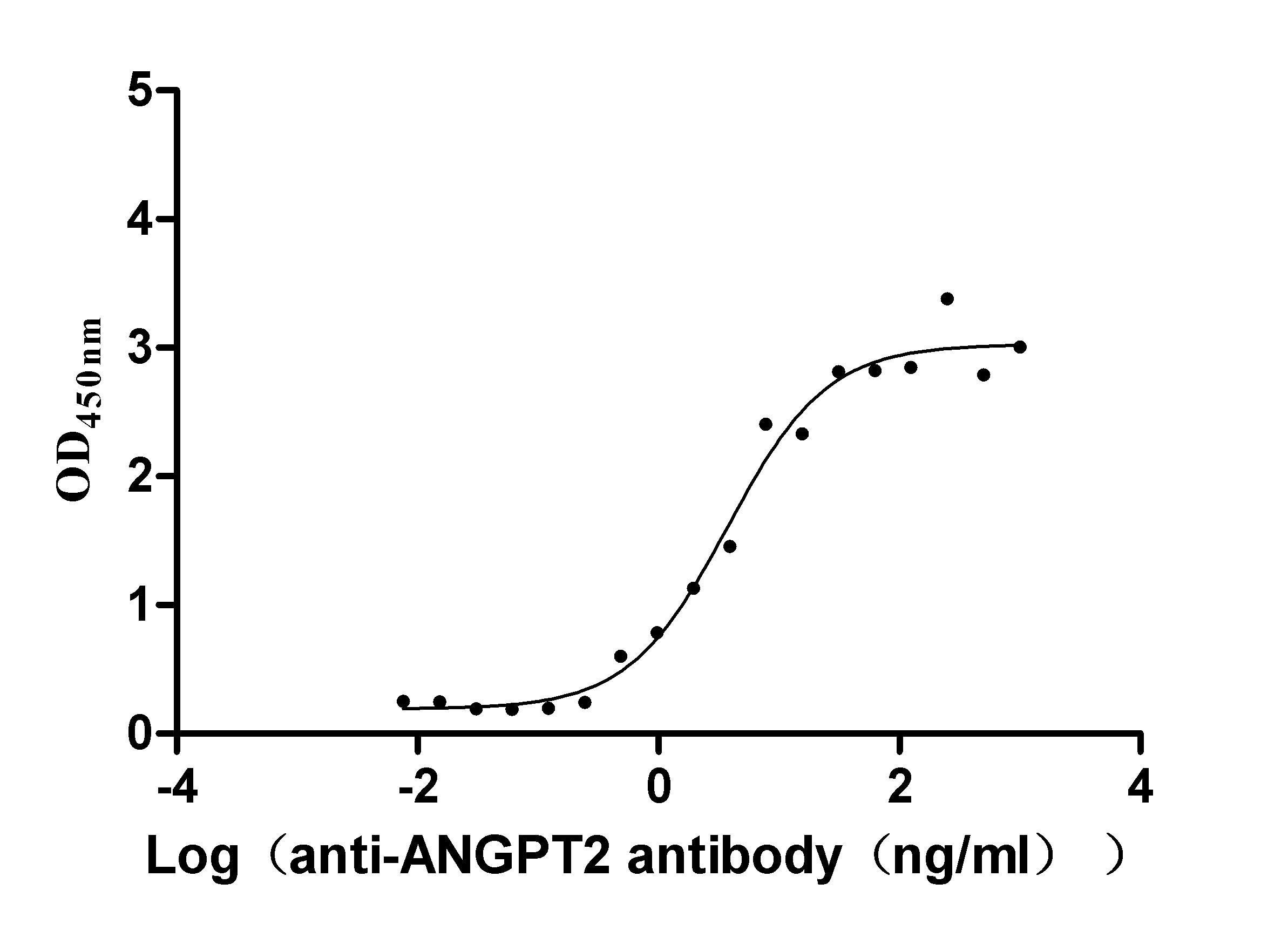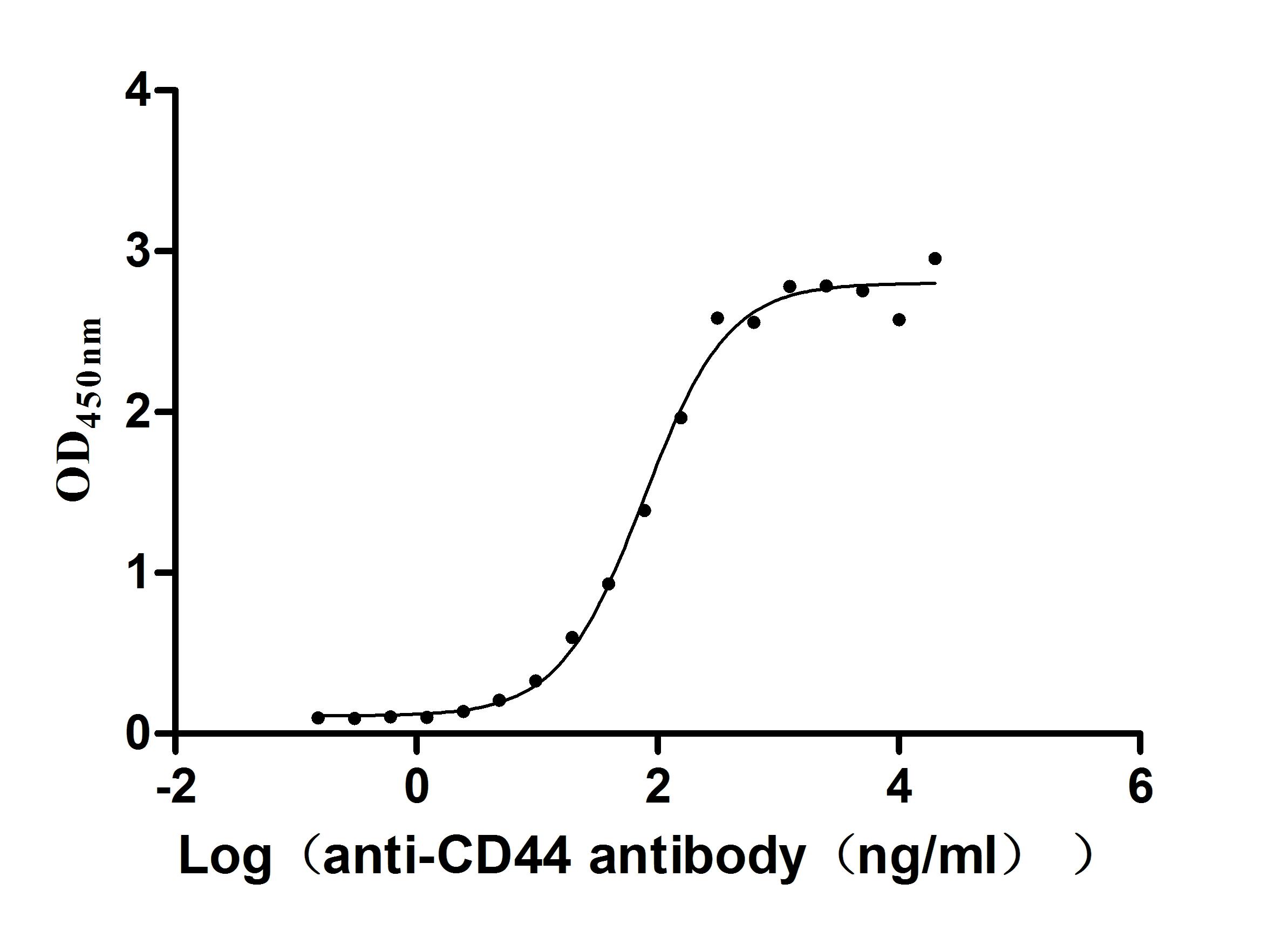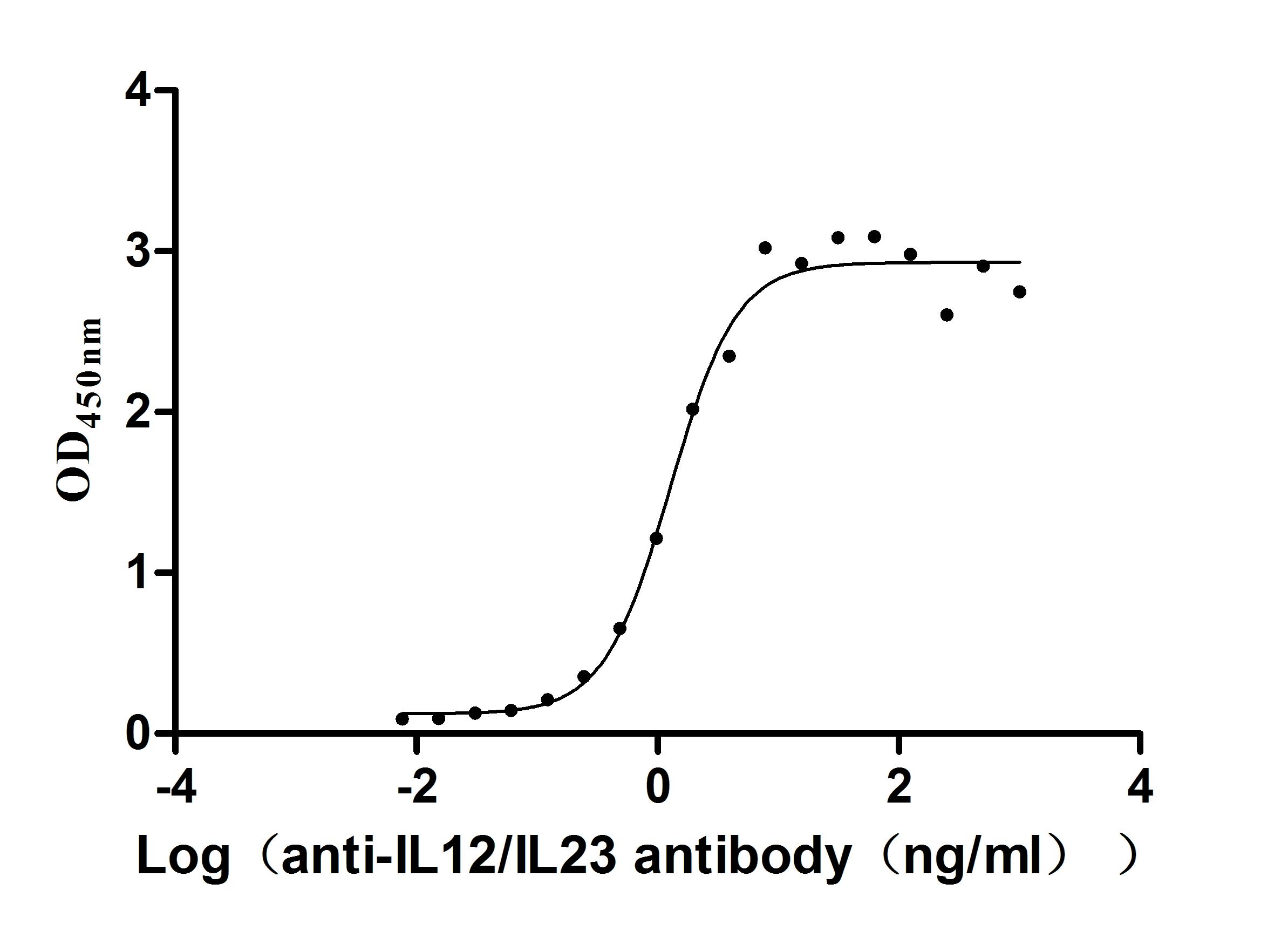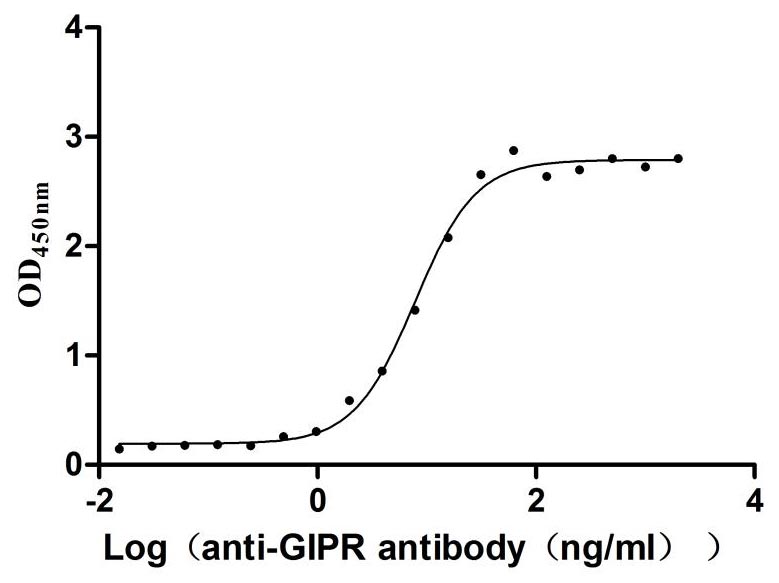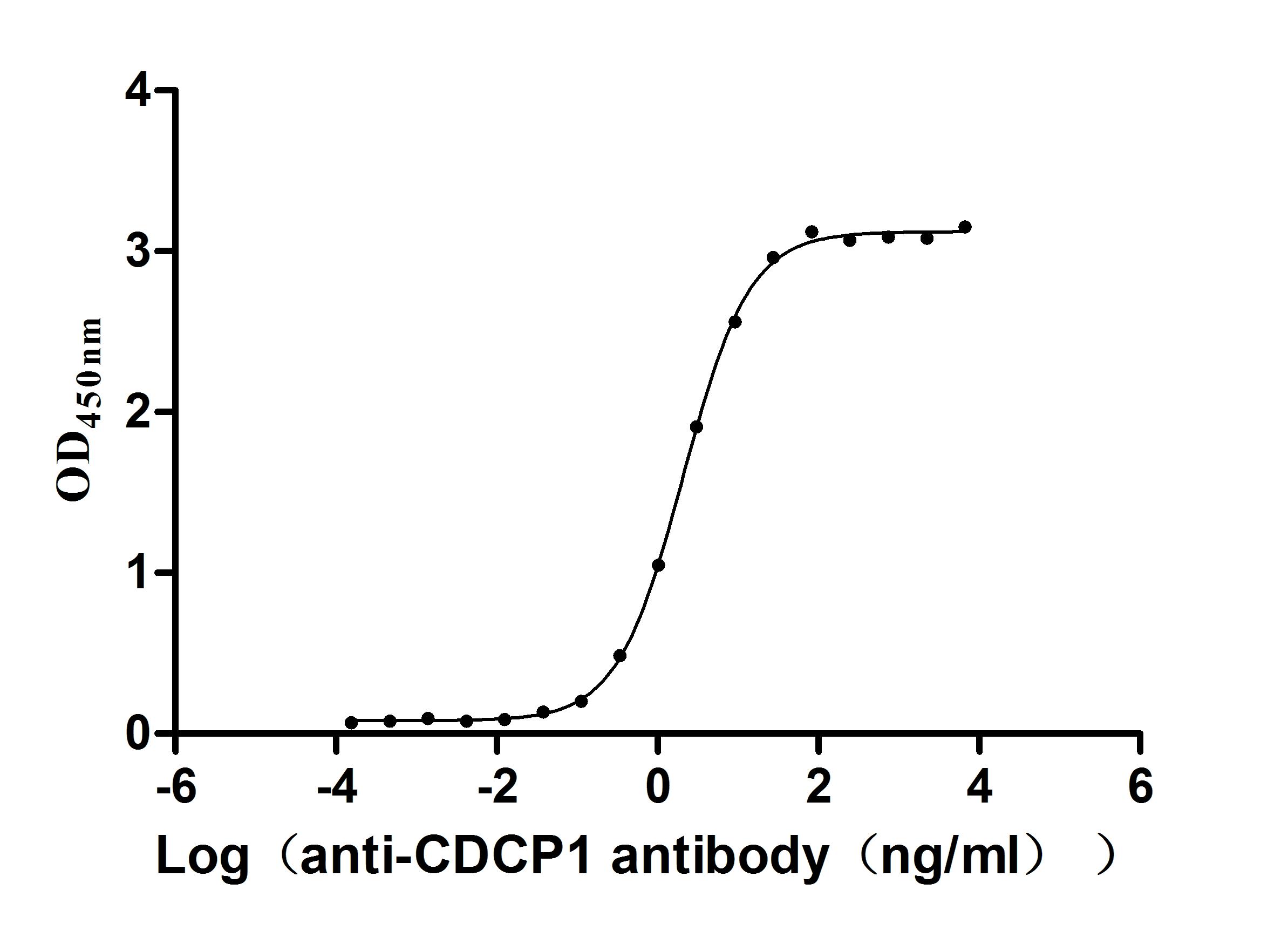Recombinant Human Complement factor H-related protein 1 (CFHR1), partial
In Stock-
货号:CSB-EP005274HU
-
规格:¥1536
-
图片:
-
其他:
产品详情
-
纯度:Greater than 85% as determined by SDS-PAGE.
-
基因名:CFHR1
-
Uniprot No.:
-
别名:(FHR-1)(H factor-like protein 1)(H-factor-like 1)(H36)
-
种属:Homo sapiens (Human)
-
蛋白长度:Partial
-
来源:E.coli
-
分子量:45.2 kDa
-
表达区域:132-221aa
-
氨基酸序列RGWSTPPKCRSTDTSCVNPPTVQNAHILSRQMSKYPSGERVRYECRSPYEMFGDEEVMCLNGNWTEPPQCKDSTGKCGPPPPIDNGDITS
Note: The complete sequence including tag sequence, target protein sequence and linker sequence could be provided upon request. -
蛋白标签:N-terminal 10xHis-GST-tagged and C-terminal Myc-tagged
-
产品提供形式:Liquid or Lyophilized powder
Note: We will preferentially ship the format that we have in stock, however, if you have any special requirement for the format, please remark your requirement when placing the order, we will prepare according to your demand. -
缓冲液:If the delivery form is liquid, the default storage buffer is Tris/PBS-based buffer, 5%-50% glycerol. If the delivery form is lyophilized powder, the buffer before lyophilization is Tris/PBS-based buffer, 6% Trehalose.
-
复溶:We recommend that this vial be briefly centrifuged prior to opening to bring the contents to the bottom. Please reconstitute protein in deionized sterile water to a concentration of 0.1-1.0 mg/mL.We recommend to add 5-50% of glycerol (final concentration) and aliquot for long-term storage at -20℃/-80℃. Our default final concentration of glycerol is 50%. Customers could use it as reference.
-
储存条件:Store at -20°C/-80°C upon receipt, aliquoting is necessary for mutiple use. Avoid repeated freeze-thaw cycles.
-
保质期:The shelf life is related to many factors, storage state, buffer ingredients, storage temperature and the stability of the protein itself.
Generally, the shelf life of liquid form is 6 months at -20°C/-80°C. The shelf life of lyophilized form is 12 months at -20°C/-80°C. -
货期:3-7 business days
-
注意事项:Repeated freezing and thawing is not recommended. Store working aliquots at 4°C for up to one week.
-
Datasheet & COA:Please contact us to get it.
相关产品
靶点详情
-
功能:Involved in complement regulation. The dimerized forms have avidity for tissue-bound complement fragments and efficiently compete with the physiological complement inhibitor CFH. Can associate with lipoproteins and may play a role in lipid metabolism.
-
基因功能参考文献:
- Novel genetic rearrangement generated from a heterozygous deletion spanning 146 Kbp involving multiple CFHR genes leading to a CFHR1-R5 hybrid protein. This deletion was found in four family members presenting with a familial dominant glomerulopathy. PMID: 28729035
- Plasma FHR-1 and the FHR-1/fH ratio were elevated in IgA nephropathy and associated with progressive disease. PMID: 28673452
- A role of FHR-1 in IgA nephropathy pathogenesis is to compete with complement regulation by factor H. PMID: 28637589
- We conclude that the relationship between complement-regulatory proteins CFHR1 and CFHR3 and response to anti-CD20 mAb therapy varies based on the specific anti-CD20 mAb used. PMID: 27528699
- To our knowledge, this is the first evaluation of the involvement of the CFHR3/CFHR1 deletion and age-related macular degeneration in CFH Y402H polymorphism Brazilian patients. PMID: 26942649
- These results identify C-reactive protein as a ligand for FHR-1 and suggest that FHR-1 enhances, rather than inhibits, complement activation, which may explain the protective effect of FHR-1 deficiency in age-related macular degeneration. PMID: 28533443
- The CFHR1 level in plasma of T2DM patients were significantly higher than that of the healthy controls. PMID: 28604974
- CFHL-1 is a CFH gene splice variant. PMID: 27814381
- We investigated whether the causal sequence variant resides in the CFH gene or the neighboring complement factor H-related 1 (CFHR1) gene, and fine mapping Implicates a deletion of CFHR1 in protection from IgA nephropathy in Han Chinese PMID: 26940089
- Next-generation sequencing of the CFH region identified putatively functional variants (missense, splice site and indel) on the four common haplotypes. We found no expression of any of the five CFH-related genes in the retina or RPE/Choroid/Sclera, in contrast to the liver, which is the main source of the circulating proteins. [CFHR1] PMID: 27196323
- Studies indicate that complement factor H-related proteins (FHR1-5) may enhance complement activation, with important implications for the role of these proteins in disease. PMID: 25979655
- These results suggest that the combination of quantitative and qualitative variations in the complement proteins encoded by CFH, CFHR3 and CFHR1 genes is key for the association of these haplotypes with disease. PMID: 26163426
- Genetic variants in CFH, CFHR3, and CFHR1 affect complement activation and thereby predispose patients to develop IgA nephropathy. PMID: 25205734
- An average of 15.2% of factor H-autoantibody positive individuals with rheumatic diseases or hemolytic uremic syndrome had homozygous deficiency of CFHR1. PMID: 22894814
- Data indicate that the autoantigenic epitope of complement factor H (CFH) and its homologous site in CFH-related protein-1(CFHR1) are structurally different PMID: 25659429
- Prompt use of immunosuppressive agents and plasma exchanges are useful for improving outcomes in pediatric patients with anti-complement factor H-associated HUS. PMID: 24088957
- Atypical haemolytic-uraemic syndrome due to heterozygous mutations of CFH/CFHR1-3 and complement factor H 479. PMID: 24333077
- Factor H and the alternative spliced product FHL-1 are expressed in RPE cells. PMID: 24280833
- we have assessed the relationship between GA and previously identified AMD-associated variants of genes (CFH, CFB, C3, FHR1, FRH3, and ARMS2/HTRA). PMID: 24557084
- Results show non-coding CFH SNP (rs6677604) and the common deletion CNP147 were strongly correlated both with each other and with plasma CFH and CFHR1 concentrations in patients with age-related macular degeneration. PMID: 23873044
- The CFHR1/complement factor H hybrid gene fusion protein contains the first three short consensus repeats of CFHR1 PMID: 23880784
- These results provide evidence for a role of CFH and FHL-1 in cutaneous squamous cell carcinoma progression and identify them as progression markers and potential therapeutic targets. PMID: 23938460
- Homozygous deletion in CFHR1 is strongly associated with occurrence of CFH antibodies in pediatric patients with atypical hemolytic uremic syndrome. PMID: 23243267
- Identification and characterization of a unique CFHR1 mutation provides insights into the biology and pathogenic mechanisms underlying C3 glomerulopathy. PMID: 23728178
- Lpd is a novel surface-exposed virulence factor of P. aeruginosa that binds Factor H, FHL-1, CFHR1, and plasminogen, and the Lpd-attached regulators are relevant for innate immune escape and most likely contribute to tissue invasion. PMID: 23071278
- genetic variations in CFH and its related genes may contribute to hypertension risk in Chinese Hans PMID: 22848687
- A hybrid CFHR3-1 gene causes familial C3 glomerulopathy. PMID: 22626820
- we show that native factor H, factor H-like protein 1, and factor H-related protein 1 (CFHR1) bind to PTX3 PMID: 22786770
- A significant association with deletion of CFHR1-4 was identified in patients who presented with bilateral geographic atrophy. PMID: 22558131
- Reduced expression of the CFHR1 allele has been associated with higher risk to atypical Haemolytic Uraemic Syndrome in Spanish patients. PMID: 22136554
- Analysis of the CFHR1 genotypes provide sufficient information to delineate the individual risk of developing age-related macular degeneration. PMID: 22247456
- Data show that 698 CNPs loci overlap with known disease-associated or pharmacogenetic-related genes such as CFHR3, CFHR1, GSTTI and UGT2B17. PMID: 21677662
- In this matched subset of Age-Related Eye Disease Study (AREDS) subjects, after adjusting for 2 known risk variants in CFH, CNP147 deletion statistically associates with diminished risk for AMD. PMID: 21856016
- Anti-factor H autoantibodies in patients with autoimmune form of atypical hemolytic uremic syndrome crossreact with CFHR1. PMID: 21677636
- Combined deletion of CFHR3 and CFHR1 is associated with a decreased risk of developing age-related macular degeneration. PMID: 21850184
- A change in gene dosage of the encoded proteins CFHR3 and CFHR1 might account for the increased systemic lupus erythematosus. risk PMID: 21637784
- deficiency of CFHR3 and CFHR1 results in a loss of complement control but enhances local regulation by factor H; alludes to critical balance between CFHR3, CFHR1 and factor H and emphasize role of complement regulation in age-related macular degeneration PMID: 20843825
- Studies indicated that atypical HUS was linked with a complement alternative pathway dysregulation due to genetic defects but also to development of autoantibodies to factor H (FH). PMID: 20865640
- Binding of the human complement regulators CFHR1 and factor H by streptococcal collagen-like protein 1 (Scl1) via their conserved C termini allows control of the complement cascade at multiple levels. PMID: 20855886
- Data from haplotype analysis demonstrates the relationship between the CFH rs10737680 association and the CFHR1-3Delta association in age-related macular degeneration. PMID: 20581873
- CFH and CFHR1, when bound on the surface of C. albicans, enhance antimicrobial activity of human neutrophils. PMID: 20008295
- Association of factor H autoantibodies with deletions of CFHR1, CFHR3, CFHR4, and with mutations in CFH, CFI, CD46, and C3 in patients with atypical hemolytic uremic syndrome. PMID: 19861685
- Human complement regulatory factor H-like protein 1 (FHL-1) binds to Streptococcal pyogenes M18 surface protein Emm18. PMID: 15557185
- the primary function of FHL-1 binding by T. denticola might be to facilitate adherence to FHL-1 present on anchorage-dependent cells and in the extracellular matrix PMID: 16239506
- Deletion of two closely related genes, complement factor H-related 1 (CFHR1) and complement factor H-related 3 (CFHR3), increases the risk of atypical hemolytic uremic syndrome. PMID: 17367211
- we have identified factor H-related protein 1 (FHR-1) as a novel protein that binds to Borrelia burgdorferi via CRASP-3, -4, and -5. PMID: 17538892
- either lacked the CFHR1/CFHR3 completely (n = 14) or showed extremely low CFHR1/CFHR3 plasma levels (n = 2) are positive for factor H (CFH) autoantibodies PMID: 18006700
- The binding of factor H and factor H-like protein 1 (FHL-1) from human sera to Aspergillus fumigatus conidia was shown by adsorption assays and immunostaining. PMID: 18039838
- Deletion of CFHR1 and CFHR3 may account for a small portion of the protection from age-related macular degeneration associated with particular haplotypes in complement factor H. PMID: 18084039
- CFH/CFHL1 binding site within borrelial BbCRASP-2 and identified single amino acid residues potentially involved in the interaction with both complement regulators PMID: 18824548
显示更多
收起更多
-
亚细胞定位:Secreted.
-
组织特异性:Expressed by the liver and secreted in plasma.
-
数据库链接:
Most popular with customers
-
Recombinant Human CD40 ligand (CD40LG), partial (Active)
Express system: Mammalian cell
Species: Homo sapiens (Human)
-
Recombinant Mouse Desmoglein-3 (Dsg3), partial (Active)
Express system: Mammalian cell
Species: Mus musculus (Mouse)
-
Recombinant Human C-X-C chemokine receptor type 4 (CXCR4)-VLPs (Active)
Express system: Mammalian cell
Species: Homo sapiens (Human)
-
Recombinant Dog Angiopoietin-2 (ANGPT2) (Active)
Express system: Mammalian cell
Species: Canis lupus familiaris (Dog) (Canis familiaris)
-
Recombinant Macaca fascicularis CD44 antigen (CD44), partial (Active)
Express system: Mammalian cell
Species: Macaca fascicularis (Crab-eating macaque) (Cynomolgus monkey)
-
Recombinant Human IL12B&IL12A Heterodimer Protein (Active)
Express system: Mammalian cell
Species: Homo sapiens (Human)
-
Recombinant Rat Gastric inhibitory polypeptide receptor (Gipr), partial (Active)
Express system: Mammalian cell
Species: Rattus norvegicus (Rat)
-
Recombinant Macaca fascicularis CUB domain containing protein 1 (CDCP1), partial (Active)
Express system: Mammalian cell
Species: Macaca fascicularis (Crab-eating macaque) (Cynomolgus monkey)

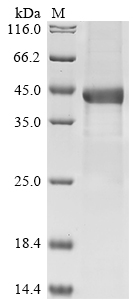


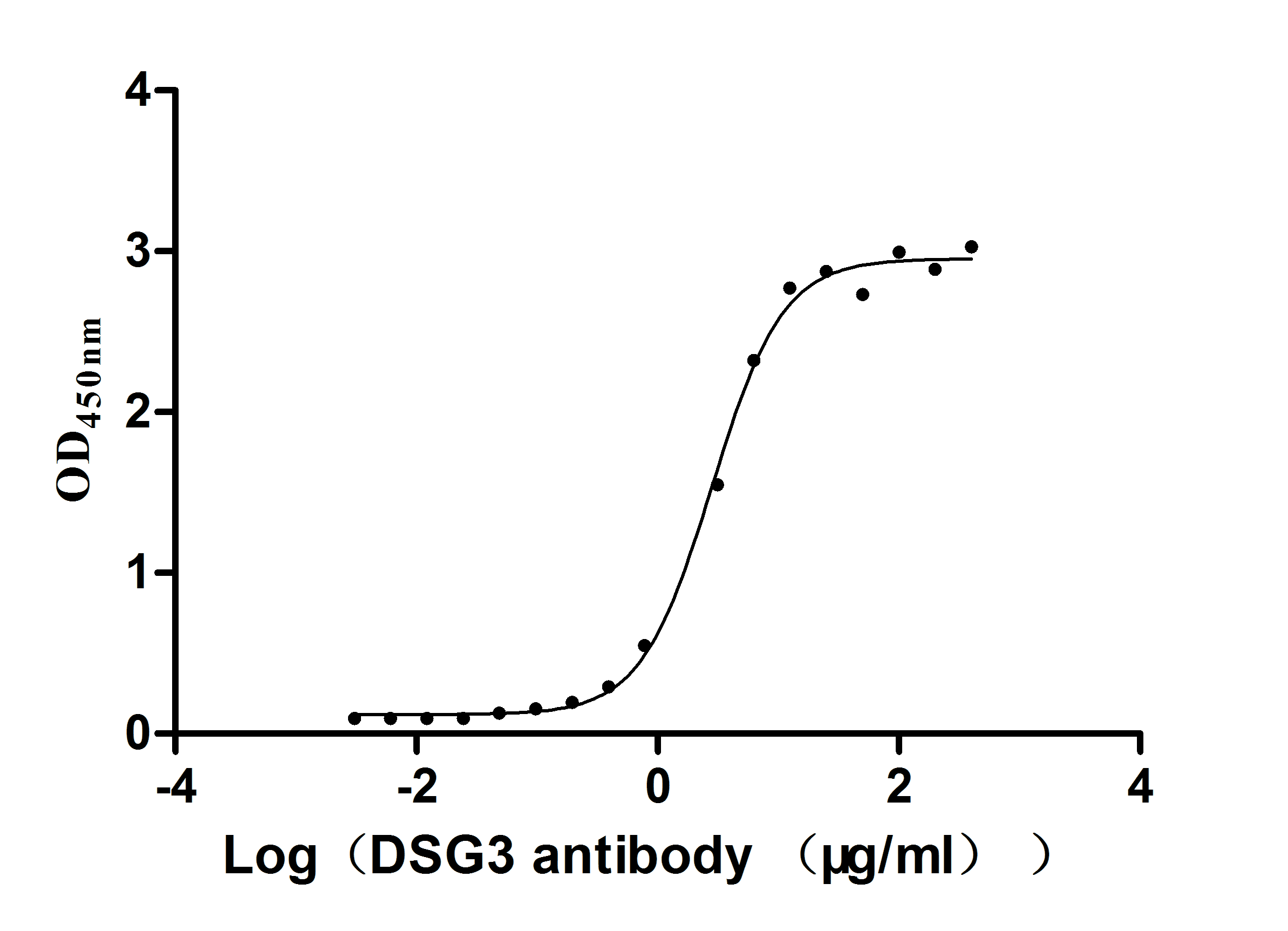
-AC1.jpg)
